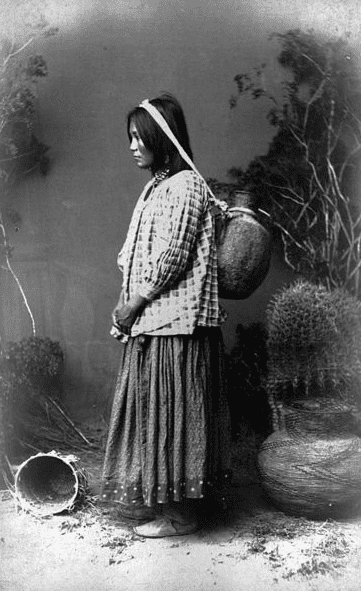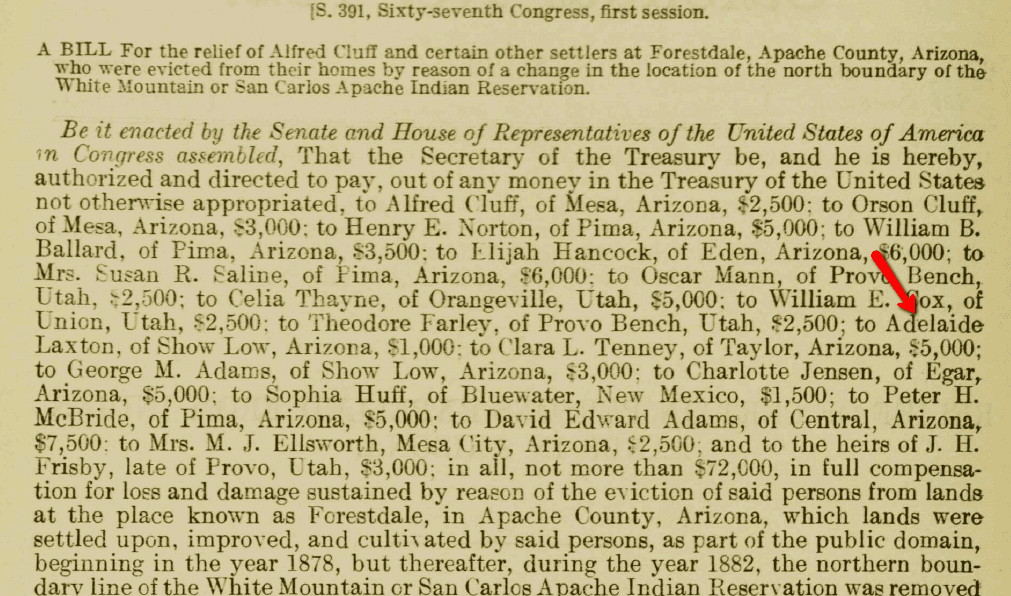Introduction: In this article in celebration of Mother’s Day, Gena Philibert-Ortega researches one of her foremothers and makes some interesting discoveries. Gena is a genealogist and author of the book “From the Family Kitchen.”
To celebrate Mother’s Day this year, I decided to research one of my female ancestors by searching through GenealogyBank’s various collections to see what information I could find, and hopefully fill in some details on my family tree.
It seems fitting to celebrate Mother’s Day by searching for one of my foremothers and finding what surprises await.

Adelaide Atkin Laxton (1833-1915)
In some cases, you may have an ancestor for whom you already have quite a bit of information on, thanks to the work of other family members – but that doesn’t mean you shouldn’t try to see what other clues exist about her life.
Adelaide Atkin Laxton is a great-great grandmother on my maternal side. Information on her life can be found in multiple places on the Internet due to the genealogical work of family members. She was born in Empingham, England, where she later met and married her husband William Laxton (1816-1890). They joined the Church of Jesus Christ of Latter-day Saints in England, eventually immigrating to the United States. Adelaide, her husband William, and their son – along with her father, sister and sister’s family – traveled to the Salt Lake Valley, first settling in Utah before making their permanent home in Arizona.
In searching for her name in the GenealogyBank search engine, I was pleasantly surprised to find 14 results. Interestingly enough, these hits were not newspaper results; they were instead from GenealogyBank’s Historical Documents collection, and they were all from various congressional bills in the U.S. Congressional Serial Set. All this legislation was about restitution owed to her and others who had been displaced from their homes when the San Carlos Apache Indian Reservation boundary was extended. The name of their community, I would later learn, was Forest Dale (or Forestdale), Arizona.

The first piece of legislation I found that mentioned Adelaide was from 7 April 1913, a bill that was introduced to the 63rd Congress about claims for relief that displaced settlers were making.

Various bills were introduced and debated during the years about these displaced settlers’ claims, until finally in 1921 there was a bill titled “Relief of Certain Persons Expelled from Indian Lands in Arizona” that provided restitution to the displaced landowners, including a proposed $1,000 for Adelaide for being “evicted” from Forestdale, Apache County, Arizona. According to this 1921 bill:
“…which lands were settled upon, improved, and cultivated by such persons, as part of the public domain, beginning in the year 1878, but thereafter, during the year 1882, the northern boundary line of the White Mountains or San Carlos Apache Indian Reservation was removed and extended north about ten miles, more or less, the result of which change in the location of said boundary line caused said lands to be included within and made a part of said reservation, and by reason of the inclusion of said lands within said reservation, the said persons were evicted from their homes by the military authorities of the United States…”

By that time, however, any money provided for Adelaide would be too late, since she died six years previously in 1915. I later learned that Congress never approved the settlers’ claims.
The Search Continues
As I read what I found via the U.S. Congressional Serial Set in GenealogyBank, I started considering what I already knew about Adelaide’s situation. I knew that my ancestors who had settled in the White Mountains of Arizona – both sides of my mother’s family – had interactions with local Native Americans. I knew that they lived near a reservation. But what I didn’t know was anything beyond names, dates, and inspirational stories I found in family histories.
By Googling on keywords including “Adelaide Laxton” and “San Carlos Indian Reservation” I came across a 2005 journal article written by Andrea Smith, a professor of Anthropology and Sociology at Lafayette College, in the Journal of the Southwest titled “Mormon Forestdale.” The article explains the legislative history of the land transfer that affected my ancestor, and describes current descendants’ knowledge of their ancestors’ land. I was happy to find in that article a chart that listed the residents of Forest Dale, including my ancestor Adelaide. The chart states that Adelaide (and her husband William) arrived in Forest Dale in 1881 and settled 160 acres, but farmed only 60 acres for one season. Adelaide signed an affidavit about her claim on 20 March 1910.*
The author of the article helps to clarify some things regarding the legislation I found in the U.S. Congressional Serial Set, including the fact that the boundary line of the reservation was never actually moved – the settlers were essentially trespassing all along.
The information from the journal article, combined with the results I found on GenealogyBank, increased my growing genealogy to-do list. Clearly, I have more to learn about this incident in my great-great-grandmother’s life. Aside from studying the article by Smith more closely, I need to look into possible Arizona land records, histories of Forest Dale and Show Low, as well as information about the Laxton’s Forest Dale neighbors. I need to seek out records that go beyond some of the vital records and censuses that are already known about Adelaide and her family.
But thanks to the information I found in GenealogyBank, I now know about some important events in Adelaide’s life: the farm she operated with her husband, the taking of their land for an Indian reservation, her claim to the government for restitution due to the loss of that land, and her almost – but never quite – receiving compensation for her loss.
This search for Adelaide was a good exercise and reminder that just because an ancestor has been researched, doesn’t mean everything has been found or published. And finally, mentions of an ancestor don’t always end with their death – after all, there Adelaide was being mentioned in a congressional bill six years after she died.
Now It’s Your Turn
Think beyond the tried-and-true obituaries and birth records, and do general searches for the women in your family tree. There’s no telling what you will find.
Happy Mother’s Day!
————————
* “Mormon Forest Dale,” Journal of Southwest History (https://ldr.lafayette.edu/bitstream/handle/10385/1394/Smith-JournaloftheSouthwest-vol47-2005.pdf?sequence=1: accessed 7 May 2017).
Related Articles:
